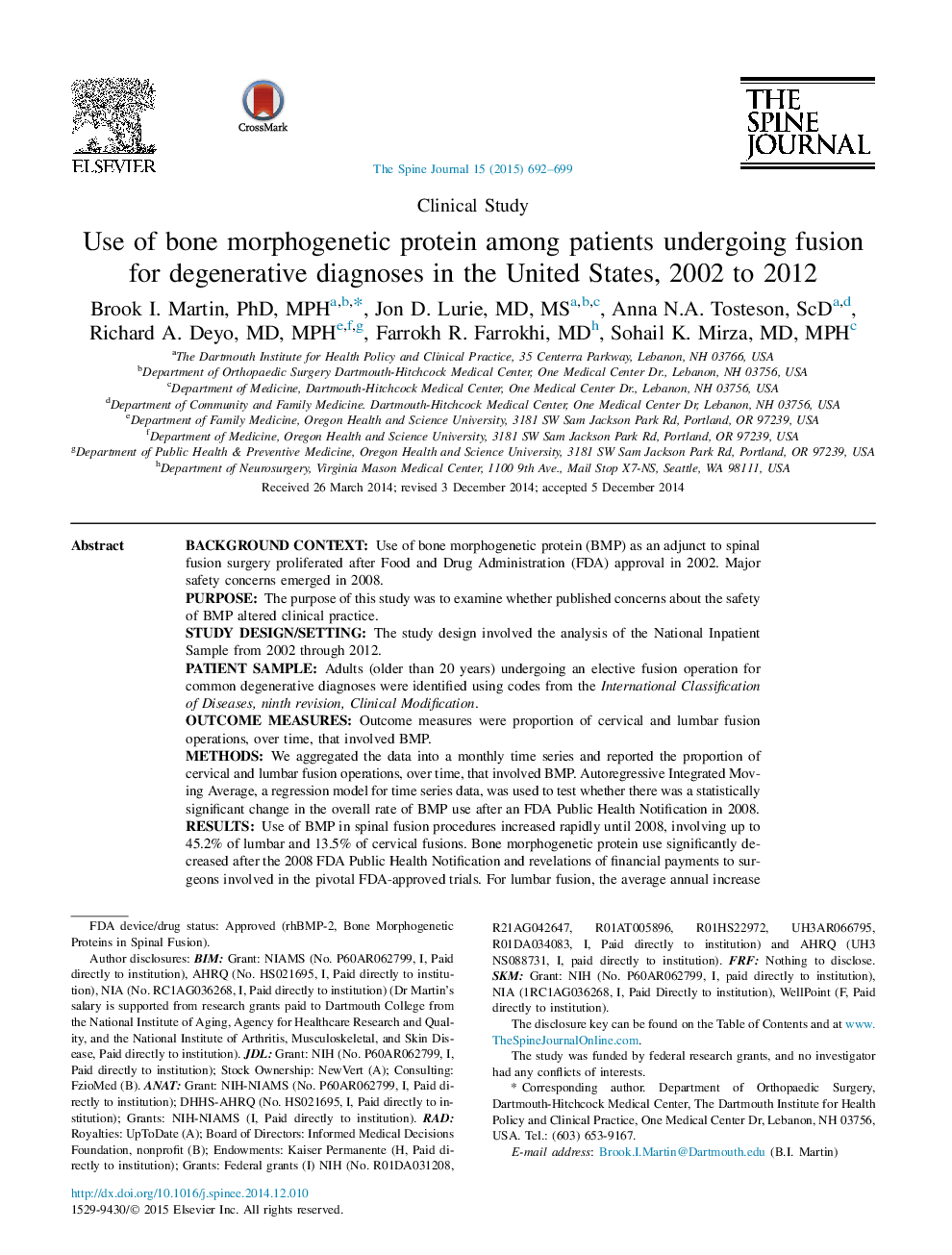| Article ID | Journal | Published Year | Pages | File Type |
|---|---|---|---|---|
| 4096356 | The Spine Journal | 2015 | 8 Pages |
Background contextUse of bone morphogenetic protein (BMP) as an adjunct to spinal fusion surgery proliferated after Food and Drug Administration (FDA) approval in 2002. Major safety concerns emerged in 2008.PurposeThe purpose of this study was to examine whether published concerns about the safety of BMP altered clinical practice.Study design/settingThe study design involved the analysis of the National Inpatient Sample from 2002 through 2012.Patient sampleAdults (older than 20 years) undergoing an elective fusion operation for common degenerative diagnoses were identified using codes from the International Classification of Diseases, ninth revision, Clinical Modification.Outcome measuresOutcome measures were proportion of cervical and lumbar fusion operations, over time, that involved BMP.MethodsWe aggregated the data into a monthly time series and reported the proportion of cervical and lumbar fusion operations, over time, that involved BMP. Autoregressive Integrated Moving Average, a regression model for time series data, was used to test whether there was a statistically significant change in the overall rate of BMP use after an FDA Public Health Notification in 2008.ResultsUse of BMP in spinal fusion procedures increased rapidly until 2008, involving up to 45.2% of lumbar and 13.5% of cervical fusions. Bone morphogenetic protein use significantly decreased after the 2008 FDA Public Health Notification and revelations of financial payments to surgeons involved in the pivotal FDA-approved trials. For lumbar fusion, the average annual increase was 7.9 percentage points per year from 2002 to 2008, followed by an average annual decrease of 11.7 percentage points thereafter (p≤.001). Use of BMP in cervical fusion increased 2.0% per year until the FDA Public Health Notification, followed by a 2.8% per year decrease (p=.035).ConclusionsUse of BMP in spinal fusion surgery declined subsequent to published safety concerns and revelations of financial conflicts of interest for investigators involved in the pivotal clinical trials.
